|
The Audio available
around a robot can be used to interact with and deploy certain
functions. Here, we are going to try to have the robots main
processor decode these audio waveforms and identify them. If
this can be done, voice controlled robots will be used around
the home to perform various tasks. Here are some new images of
the Audio processors output and configuration. All waveform images
here were taken off of a HP digital storage scope.
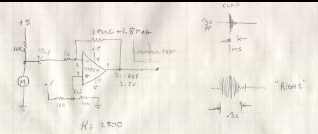 |
Left: Schematic
diagram of high gain electret microphone amp. The two 10k resistors
on the plus input set the output DC level to mid range.
Click to
enlarge
|
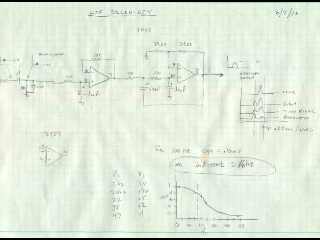 |
Left: Schematic
diagram of audio envelope generation. Here we first strip out
the bottom half of the waveform with the .1uf cap, 1N4148 diode
and a 10k ground reference. This rectified waveform enters the
second set of amps, which is a 16Hz Butterworth type low pass
filter. This removes the freqency burst inside each audio sound
and presents a clean envelope waveform ready for insertion into
the analog input of a processor. The filters measured roll off
is on the lower right.
Click to
enlarge!
|
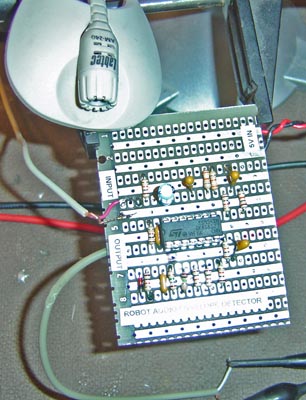 |
Left:
Here is the circuit board, with electret microphone, and oscilloscope
probe. Electrets are very sensitive to sound, I can even detect
my hand waving sub sonic sound a foot away. The idea is to be
able to talk to the robot from across the room to give it instructions.
Is this possible? We shall see! |
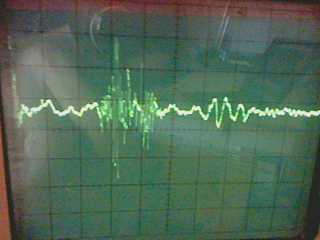 |
Left:
Output of first microphone amplifier for the word "TESTING"
- 0v is two lines up from the bottom, and the waveform here is
at DC=2.5v so you can see both top and bottom of the burst. I
dont quite have the technique down yet to photograph the screen
of the O'scope with the web cam. |
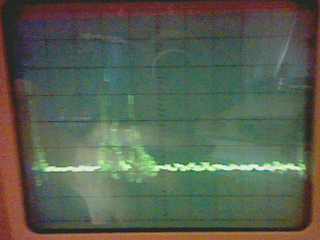 |
Left:
After passing through the rectifier circuit, we set the DC to
zero volts and chop the bottom half off. This when filtered by
the 16 Hz filter gives you the envelope output. |
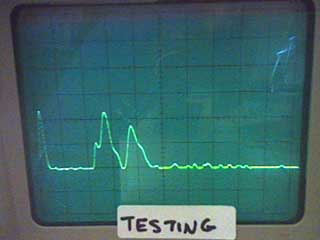 |
Left: Final
Envelope detection waveform - "TESTING"
You can see the
tiny glitch at the start of the first hump? Thats the "T"
sound that starts the word. And the gap between humps is the
syllable break.
|
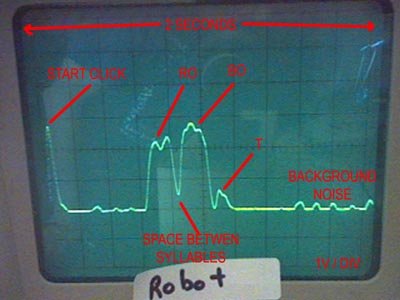 |
Left:
Envelope detection waveform - "ROBOT" is being said
here, I've labeled the components of this word so you can see
how this works. The scope was set for single trigger, so I started
the two second long trace with a click, then said the word. The
shape of the envelope detected waveform is pretty repeatable,
in other words If I say the same word twice, the shape is very
similar, and VERY different from other words. Obviously, words
that rhyme will be a problem, so Ill use very distinct words
for now. The frequency components are filtered out on this set,
I am just working with the overall shape of the word. |
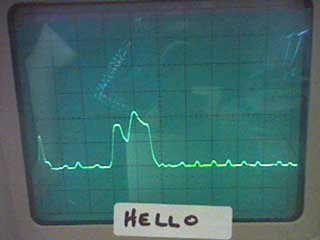 |
Left:
Envelope detection waveform - "HELLO" Again, two syllables,
with the second one emphasized. |
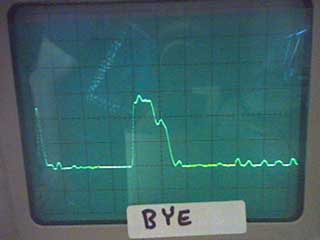 |
Left:
Envelope detection waveform - "BYE" A quick on hump
sound with lots of energy. |
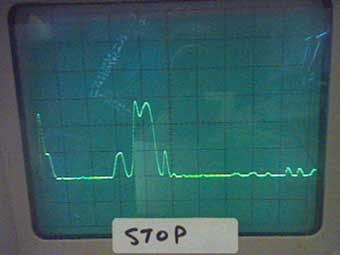 |
Left:
Envelope detection waveform - "STOP" Ok, three parts
seen here of this word: the initial "S", then the main
hump is for short "O", followed by the ending pulse
for the "P". You can see that different words have
much different envelopes. Deciphering this is the key! The next
posting will detail this. |
|


HOME